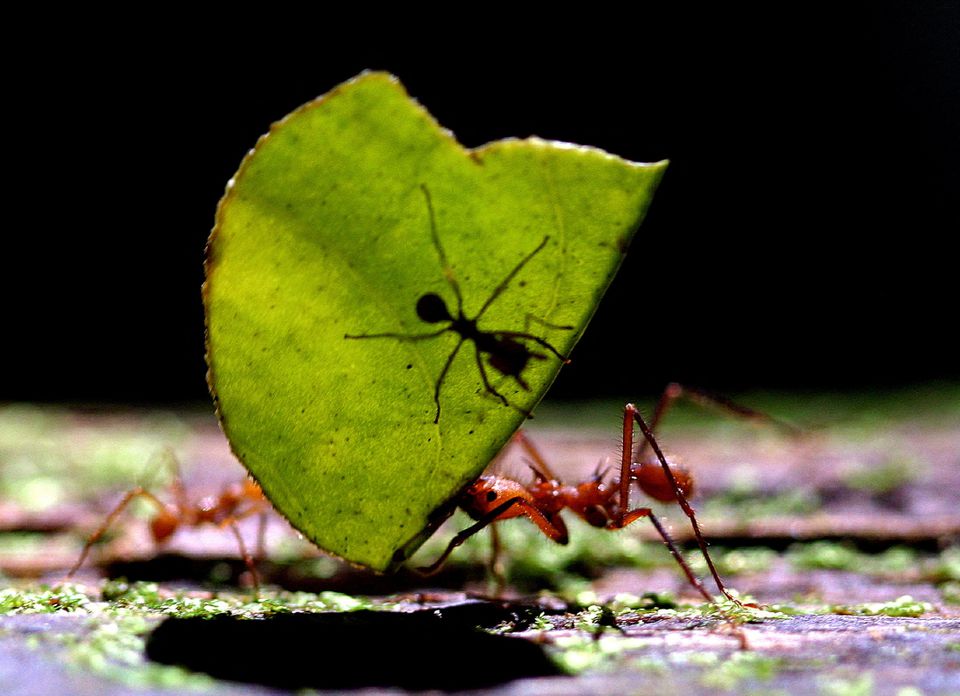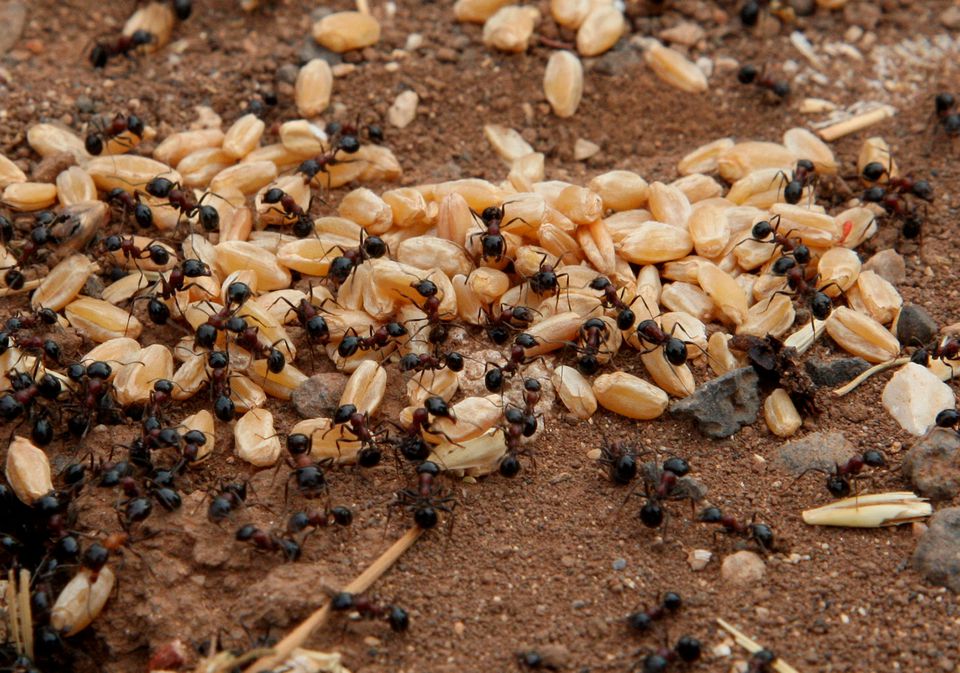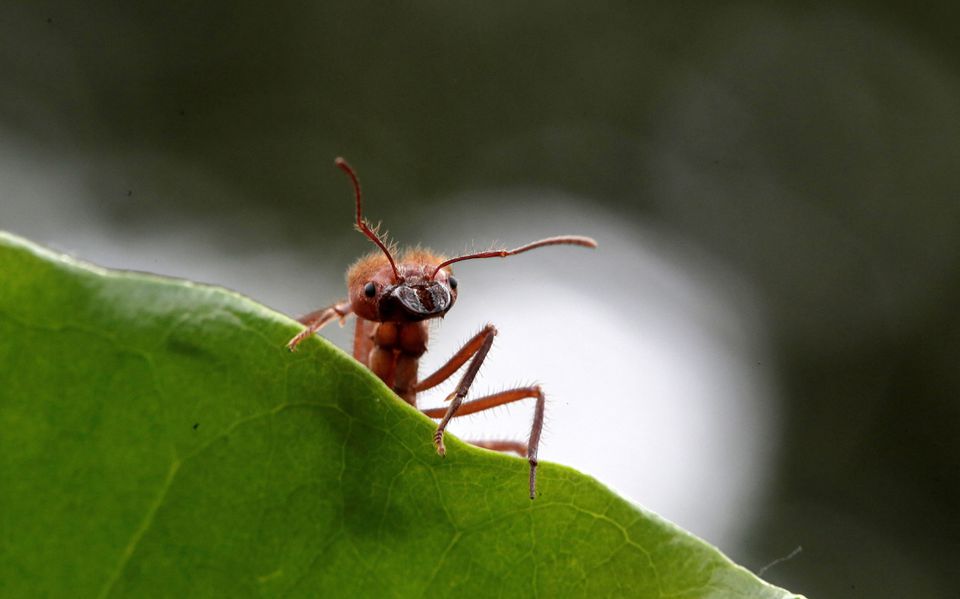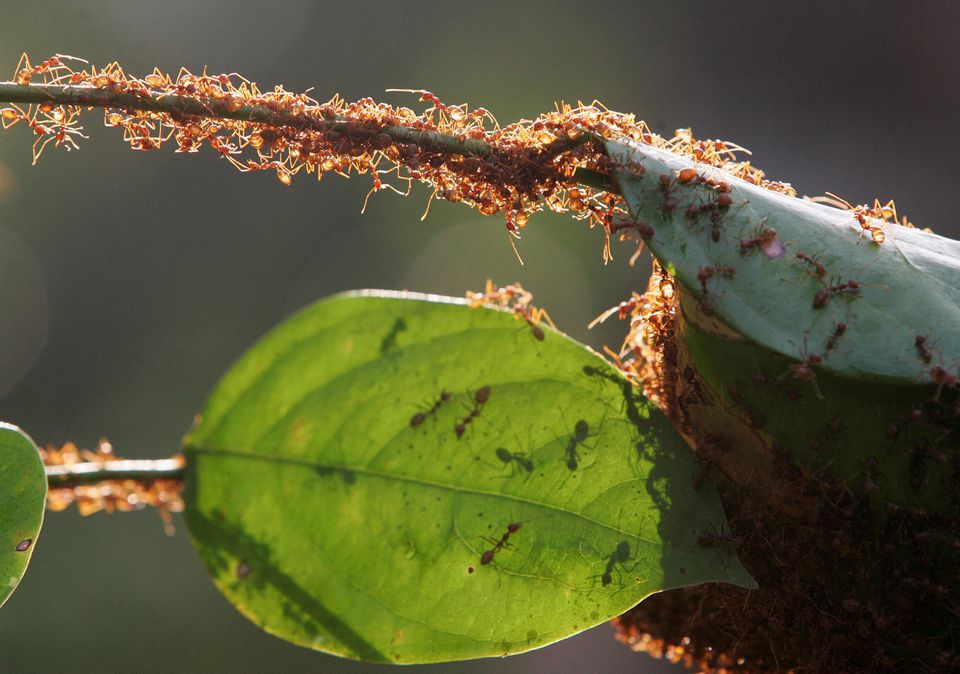The world's human population is forecast to surpass 8 billion in the coming months. Compared to ants, that is a mediocre milestone.
Researchers have made the most thorough assessment to date of the global population of ants - insects that have colonized almost everywhere on the planet - and the estimated total is a mind-blowing 20 quadrillion of them, or approximately 2.5 million for every human.
|
|
| Ants carry grains of wheat in a field in Assanamein area, south of Damascus August 20, 2009. Photo: Reuters |
It should come as little surprise considering how ubiquitous these busy and social insects are and the fact that they have thrived since the age of dinosaurs, with the oldest-known ant fossil dating back about 100 million years to the Cretaceous Period.
"Ants certainly play a very central role in almost every terrestrial ecosystem," said entomologist Patrick Schultheiss of the University of Würzburg in Germany and the University of Hong Kong, co-lead author of the study published this week in the journal Proceedings of the National Academy of Sciences.
"They are very important for nutrient cycling, decomposition processes, plant seed dispersal and the perturbation of soil. Ants are also an extremely diverse group of insects, with the different species fulfilling a wide range of functions. But most of all, it is their high abundance that makes them key ecological players," Schultheiss said.
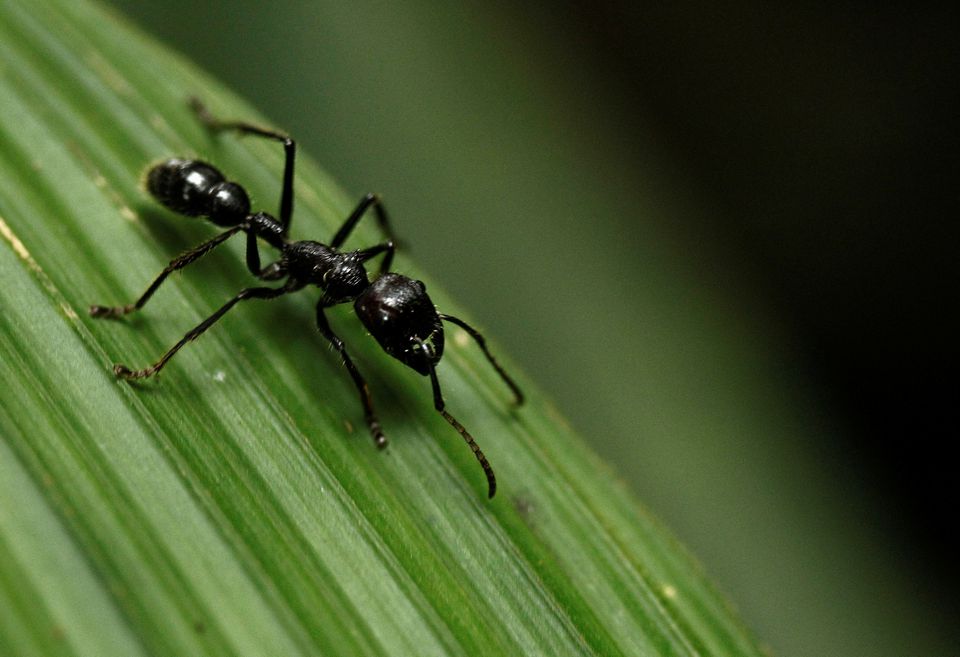 |
| A bullet ant (Paraponera clavatta) walks on a leaf at the Braullio Carrillo National Park, 50 kilometers (31 miles) east of San Jose, June 5, 2012. Photo: Reuters |
There are more than 12,000 known species of ants, which generally are black, brown or red in color and possess bodies segmented into three parts. Ranging in size from about four-hundredths of an inch (1 mm) to about 1.2 inches (3 cm) long, ants typically inhabit soil, leaf litter or decaying plants - and occasionally human kitchens.
Ants, whose closest relatives are bees and wasps, are native to nearly everywhere on Earth, as any picnicker knows, except Antarctica, Greenland, Iceland and some island nations.
"I was amazed that the ants' biomass was higher than that of wild mammals and birds combined, and that it reaches 20% of the human biomass. That gives you an understanding of the scale of their impact," said insect ecologist and study co-lead author Sabine Nooten, also of the University of Würzburg and University of Hong Kong.
"I find the enormous diversity of ants fascinating. They can be tiny or huge and show the most bizarre adaptations," Nooten added, citing a widespread ant genus called Strumigenys, known for long mouthparts with spikes used to hunt small invertebrates.
|
|
| A zompopa ant reared for human consumption is pictured in the insect farm of biologist Federico Paniagua, as he promotes the ingestion of a wide variety of insects as a low-cost and nutrient-rich food, in Grecia, Costa Rica July 13, 2019. Photo: Reuters |
The researchers based their analysis on 489 studies of ant populations spanning every continent where ants live.
"Our dataset represents a massive collecting effort of thousands of scientists. We were then able to extrapolate the number of ants for different regions of the world and estimate their total global number and biomass," Schultheiss said.
Tropical regions were found to harbor many more ants than other regions, with forests and drylands boasting more ants than urban areas.
"There are certain parts of the world where we have little data and we cannot reach reliable estimates for all continents. Africa is one such example. We have long known that it is a very ant-rich continent but also very under-studied," Schultheiss said.
|
|
| A colony of weaver ants build their nest from leaves in Kuala Lumpur January 31, 2009. Photo: Reuters |
Ants generally live in colonies, sometimes consisting of millions of them divided into groups with different roles such as workers, soldiers, and queens. The workers, all females, care for the bigger queen and her offspring, maintain the nest, and forage for food. Males mate with queens, then die.
"Some ants can certainly be very annoying, but that's a very human-centered perspective," Schultheiss said.
"Most ants are actually highly beneficial, even to us humans," Schultheiss added. "Think about the amount of organic matter that 20 quadrillion ants transport, remove, recycle and eat. In fact, ants are so essential for the smooth working of biological processes that they can be seen as ecosystem engineers. The late ant scientist E.O. Wilson once called them 'the little things that run the world.'"



